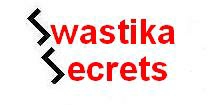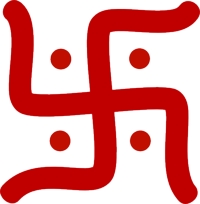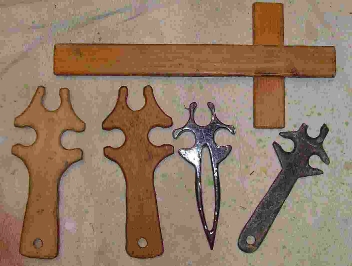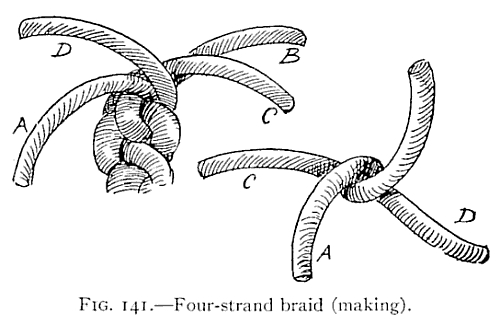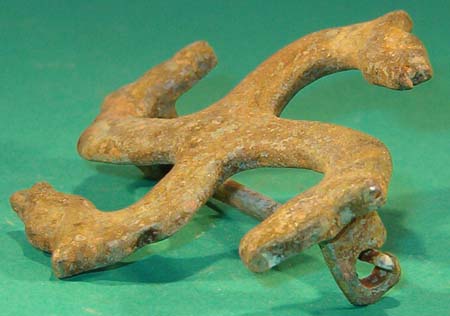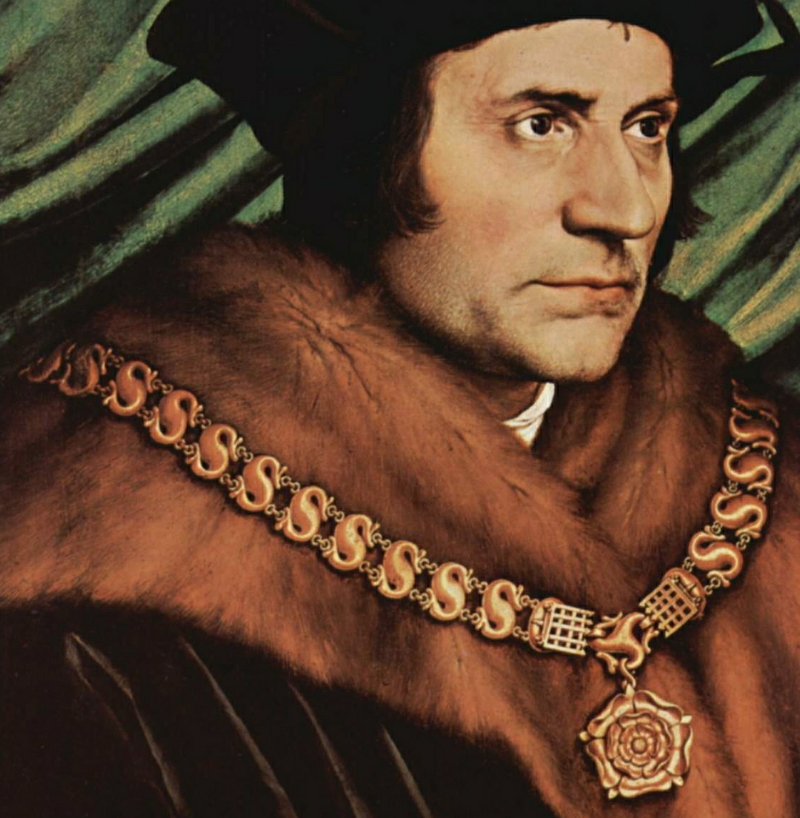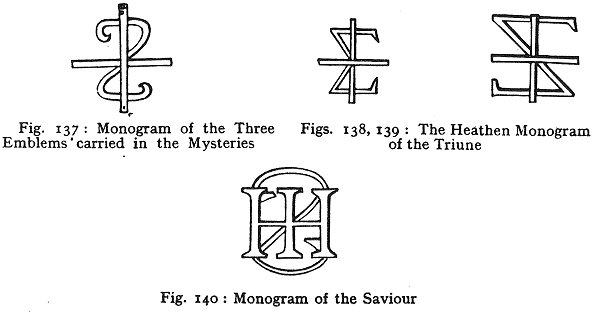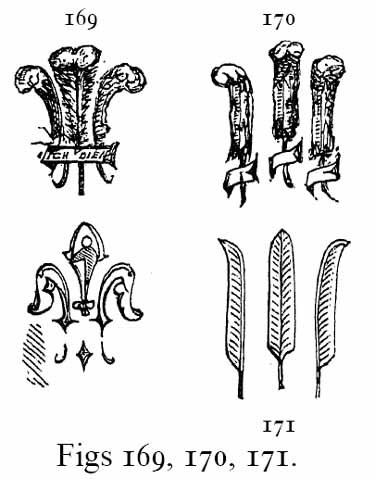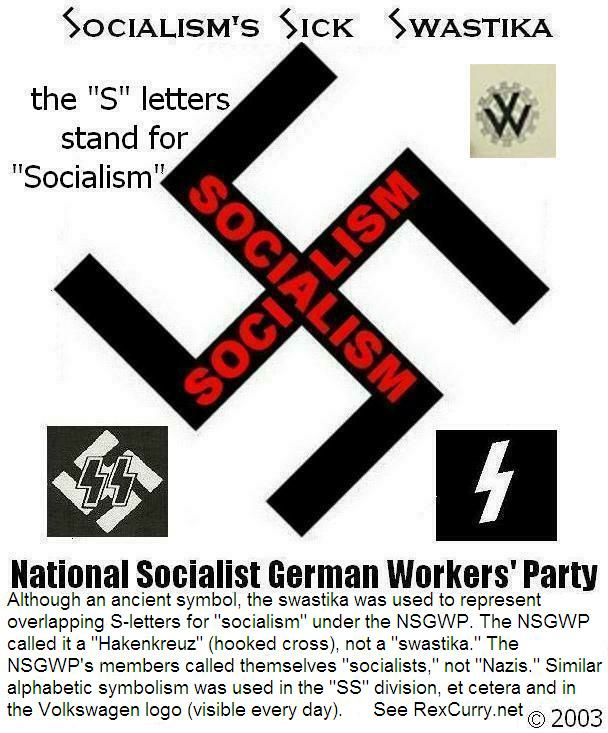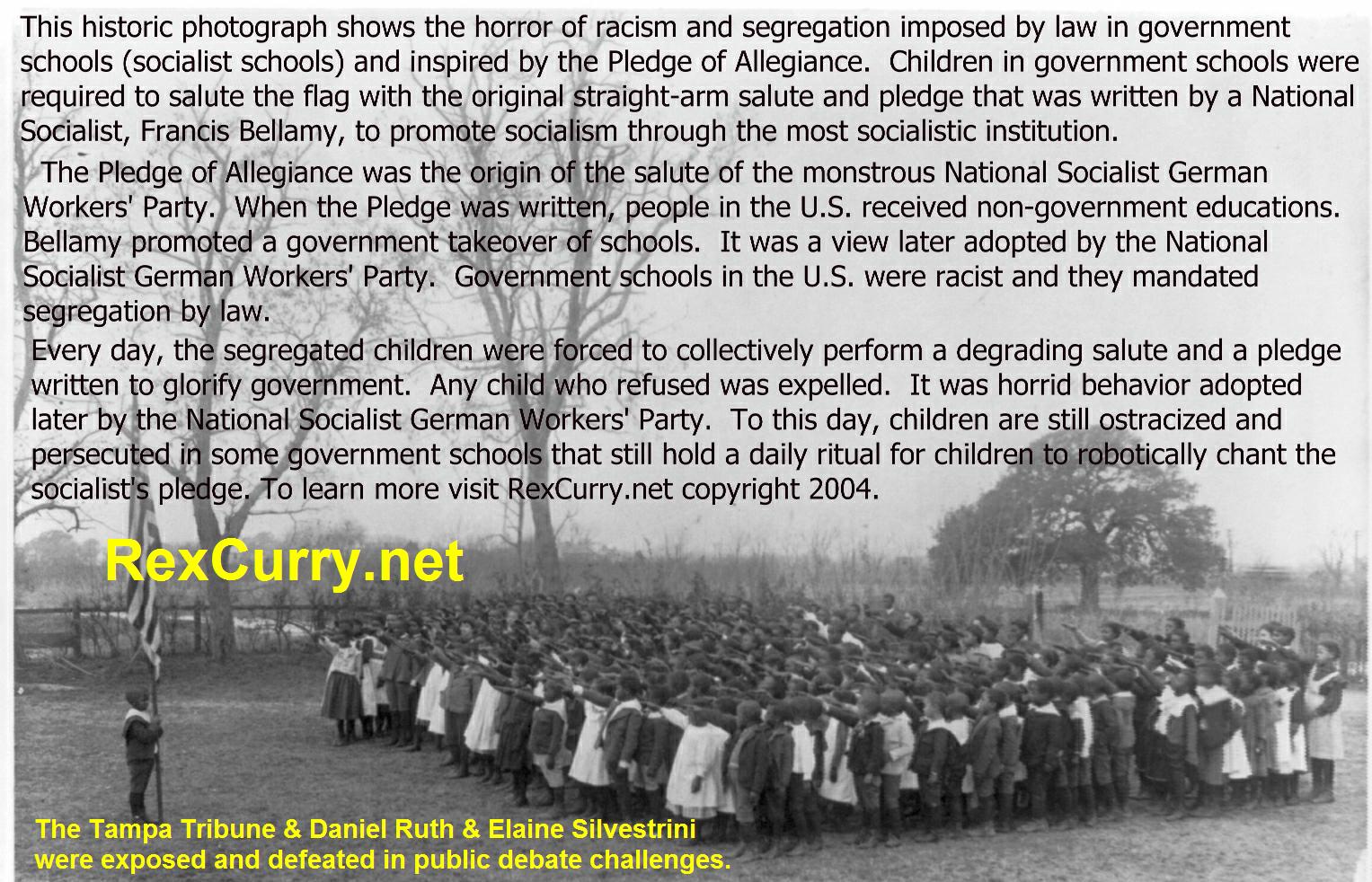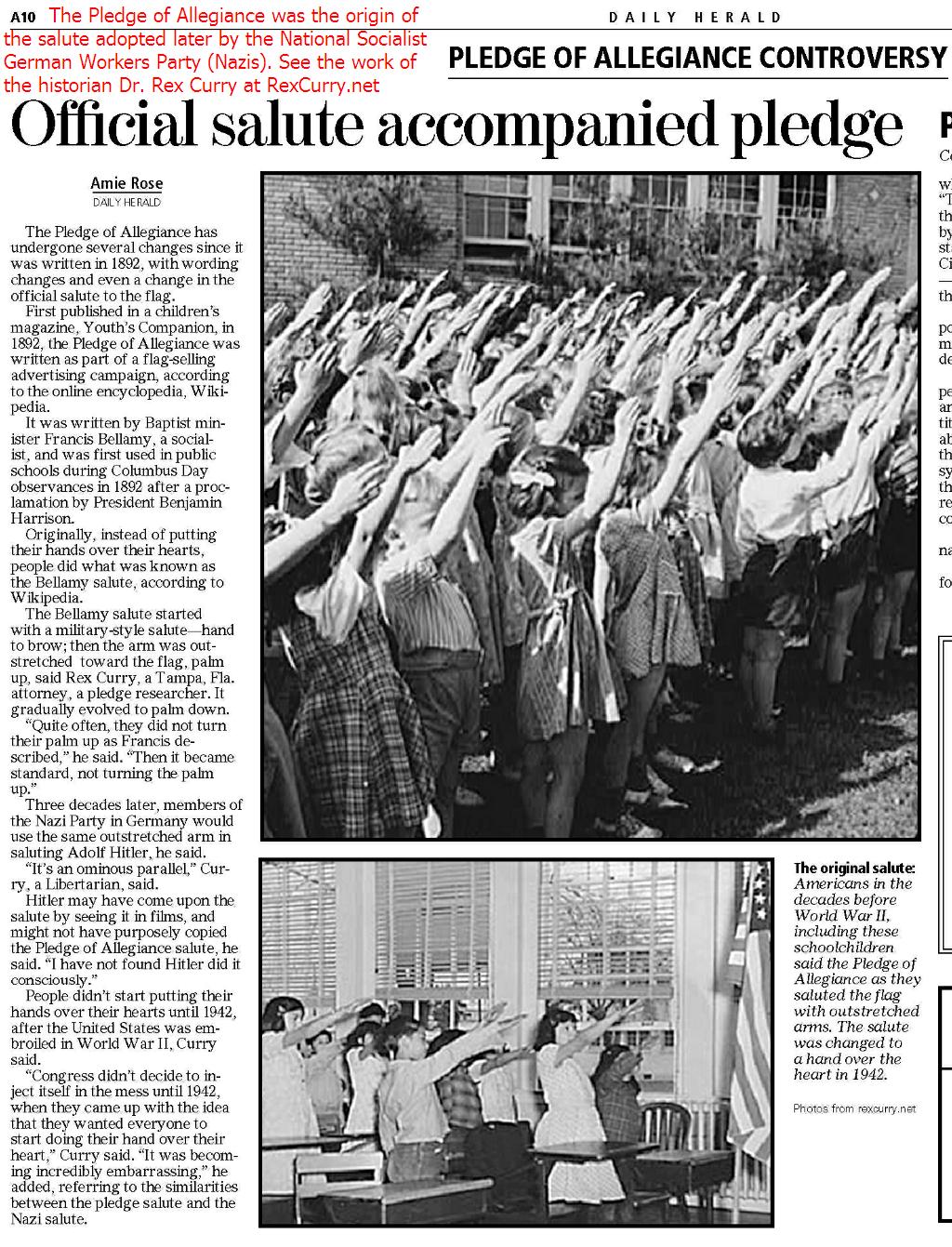A new discovery shows that ancient swastikas
shapes were used as buttons and were used as tools for braiding, spinning
and twisting. http://rexcurry.net/swastika-braiding.html
The research is explained in the research of the historian Dr. Rex Curry
(author of "Swastika Secrets"). http://rexcurry.net/book1a1contents-swastika.html
Dr. Curry's work helps to explain how the swastika evolved into alphabetical
symbolism for overlapping S-letters for "socialism" under the American socialists
Edward Bellamy, Francis Bellamy, and the Theosophical Society, and, later,
by the National Socialist German Workers' Party (Nazis). German Socialists
used similar alphabetic symbolism for other groups, including the SS Division.
Similar alphabetic symbolism is still visible as Volkswagen VW emblems.
As a primitive button, the swastika could be attached to cloth or it
could remain unattached for use as a brooch, pin or clasp (by inserting
it through button-style slits in two pieces of cloth). It is an improvement
over an un-hooked cross in similar uses. If the end hooks are bent at more
acute angles they can provide greater adherence or hooking. They hooks
can also be pointed or sharpened so that it can be imbedded again, or to
hold cloth more firmly. The shape was easier to create than modern round
buttons. It can be created from various materials. It could be fashioned
out of a single piece of un-cut metal or wire, simply by bending and shaping
it with some overlapping. It could be used without attaching it permanently
to a single garment, and without thread or string. It also provided
the option of attachment to cloth via thread and string without the need
of drilling holes (as is the case with more modern buttons).
http://rexcurry.net/swastika-braid-clasp-roman-bronze-1to3AD.jpg
Ancient pictorial evidence also shows the swastika symbol on tools
related to braiding, spinning and twisting. The symbol served as
a visual instruction for the direction of spin, and also served as a visual
cue for reaching and maintaining the optimum speed of spin while the symbol
revolved. The swastika was also a crude effort at 3-dimensional art to show
the over-and-under mechanics of braiding, weaving and the creation of fabric
or textiles. The squared swastika is also an easy artful design to
hand-weave into fabric, as was done in history, and it is a design that lends
itself to linking, chaining and other repetition. In another use, the swastika
had individual yarns or strands threaded through the hooks of the swastika
and the tool would be spun or turned to twist and braid. Such a tool would
have operated more efficiently with an axis extending from the center.
Some ancient swastika symbols even have dots (where strands would have
passed) within each hook of the symbol in order to illustrate the tool's
use. http://rexcurry.net/swastika-braid-hindu.jpg
The research helps to explain why the swastika is also known as the
"hakenkreuz" or "hooked cross." The arms of the symbol really were
"hooks" that held fibers.
Crosses were also used as spinning and braiding tools before the
hook innovation was added to the cross.
Swastika tools are easily recreated using heavy wire (i.e. from coat
hangers) combined with modern technology that provides greater spinning
and twisting efficiency via electrical power. Similar principles apply to
modern hair braid tools that hold four strands of hair in spinning hooks
around a rotating center piece that uses an electric motor. The devices
are available in the market.
Many modern myths about swastikas are based on the false belief
that Nazis called their symbol a "swastika," as explained by Dr. Curry.
The National Socialist German Workers' Party called its symbol a "Hakenkreuz."
The "swastika myth" continues to be repeated in efforts to cover-up
new discoveries, including Dr. Curry's discovery that German National Socialists
altered their symbol and sometimes used it as alphabetic symbolism, such
as to represent overlapping "S" letters for their "socialism."
The Anthropologist Heinrich Schliemann helped to popularize the swastika
when he wrote about finding the symbol in his excavations of the site of Homer's Troy on
the shores of the Dardanelles from
1871 to 1875. Many of those
examples of swastikas appeared on spinning whorls or drop spindles. Those
and other examples of swastikas on spinning tools were also covered by Thomas
Wilson in his book “Swastika the earliest known symbol and its migrations”
published in 1894. The symbol became known in France, Germany, Britain, Scandinavia,
China, Japan, India and the United States. Navajo blankets were woven
with swastikas as artful designs.
Professor Curry's work explains those "migrations" or provides an
independent basis for discovery, in that the swastika would have migrated
with the art of spinning and braiding or would have been independently
discovered through the development of those arts.
Four-strand braiding is highly ornamental and is easy and simple.
The process is illustrated in an accompanying illustration, and consists
in crossing the opposite strands across and past one another. The
very act of braiding and the braid itself creates the form of the swastika.
The swastika shape could also arise in any basketweaving society.
The swastika is a repeating design, created by the edges of reeds in a
square basket-weave.
In making a rope or line, the fiber of hemp, jute, cotton, or other
material are loosely twisted together to form what is technically known
as a "yarn." When two or more yarns are twisted together they form
a "strand." Three or more strands form a rope, and three or more
ropes form a cable. To form a strand the yarns are twisted together in
the opposite direction from that in which the original fibers were twisted;
to form a rope the strands are twisted in the opposite direction from the
yarns of the strands, and to form a cable each rope is twisted opposite
from the twist of the strands. In this way the natural tendency for each
yarn, strand, or rope to untwist serves to bind or hold the whole firmly
together.
As an old source stated "In rope the strands turn from left to right or
'with the sun,' while cable is left-handed or twisted 'against the sun.'
Certain ropes, such as 'bolt-rope' and most cables, are laid around a
'core' or central strand and in many cases are four-stranded."
The S-shapes of the swastika led to other uses of S-symbolism in jewelry
and elsewhere. The symbolism is shown a 1527 painting "Portrait of Thomas
Morus" or "Sir Thomas More" as Lord Chancellor, by the Artist Hans Holbein
the Younger (in the Frick Collection in New York).
http://rexcurry.net/swastika_collar_of_esses_livery_hans_Holbein.jpg
The painting depicts a livery collar known as the Collar of Esses (or
S S), due to the S-shapes. Note the three-armed swastika-style center piece
holding the pendant. This famous livery collar, which has never passed out
of use, takes many forms, its Esses being sometimes linked together chainwise,
and sometimes, in early examples, bestowed as the ornamental bosses of a
garter-shaped strap-collar.
http://rexcurry.net/christian-socialism-social-gospel.html
In quilting the swastika pattern is easy to create and is also known as
a "Catch Me If You Can" and a "Whirligig" due to its similarity to a pinwheel.
Dr. Curry's work has been cited and verified on Wikipedia. It might be the
most referenced historical research of its type on Wikipedia. His work is
sometimes used without attribution on Wikipedia in apparent efforts to boost
the credibility of the borrowers.
The following is from the book “Swastika the earliest known symbol
and its migrations” by Thomas Wilson and published in 1894 (at page 771)
-
“Dr. Schliemann found many specimens of Swastika in his excavations
at the site of ancient Troy on the hill of Hissarlik. They were mostly
on spindle whorls, and will be described in due course. He appealed
to Prof. Max Muller for an explanation, who, in reply, wrote an elaborate
description, which Dr. Schliemann published in ‘Ilios.’
He commences with a protest against the word Swastika being applied
generally to the sign Swastika, because it may prejudice the reader or
the public in favor of its Indian origin. He says:
‘I do not like the use of the word svastika outside of India.
It is a word of Indian origin and has its history and definite meaning in
India. * * * The occurrence of such crosses in different parts of the world
may or may not point to a common origin, but if they are once called Svastika
the vulgus profanum will at once jump to the conclusion that they all come
from India, and it will take some time to weed out such prejudice.’ ”
Muller's prediction was amazingly accurate, and he labeled so
many people in the world today as "vulgus profanum." It is translated
as "uneducated masses" and that is why a more literal translation is "vulgar
and profane."
Translators changed “hakenkreuz” to “swastika.” Who was the first bad
translator and why did others repeat the misrepresentation? "Swastika"
translators might have wanted the National Socialist German Workers' Party
to stain a foreign symbol rather than their own. "Hakenkreuz" is a
reference to a cross. http://rexcurry.net/swastikacross.html
Although the swastika was an ancient symbol, Professor Curry discovered
that it was also used sometimes by German National Socialists to represent
"S" letters for their "socialism." Curry changed the way that people
view the symbol of the horrid National Socialist German Workers' Party.
Hitler altered his own signature to use the same stylized "S" letter for
"socialist" and similar alphabetic symbolism still shows on Volkswagens.
http://rexcurry.net/book1a1contents-swastika.html
The "swastika myth" continues to be repeated in efforts to cover-up Dr.
Curry's discoveries.
After the swastika / hackenkreuz was adopted as a symbol of socialism,
socialists continued to use it as a device for twising, as they twisted
individual rights. They continued to use it for spinning, as they
spun property rights in dizzying circles. They used it to weave the
fabric of totalitarianism.
|
Swastika http://rexcurry.net/swastika3clear.jpg
Swastika
|
